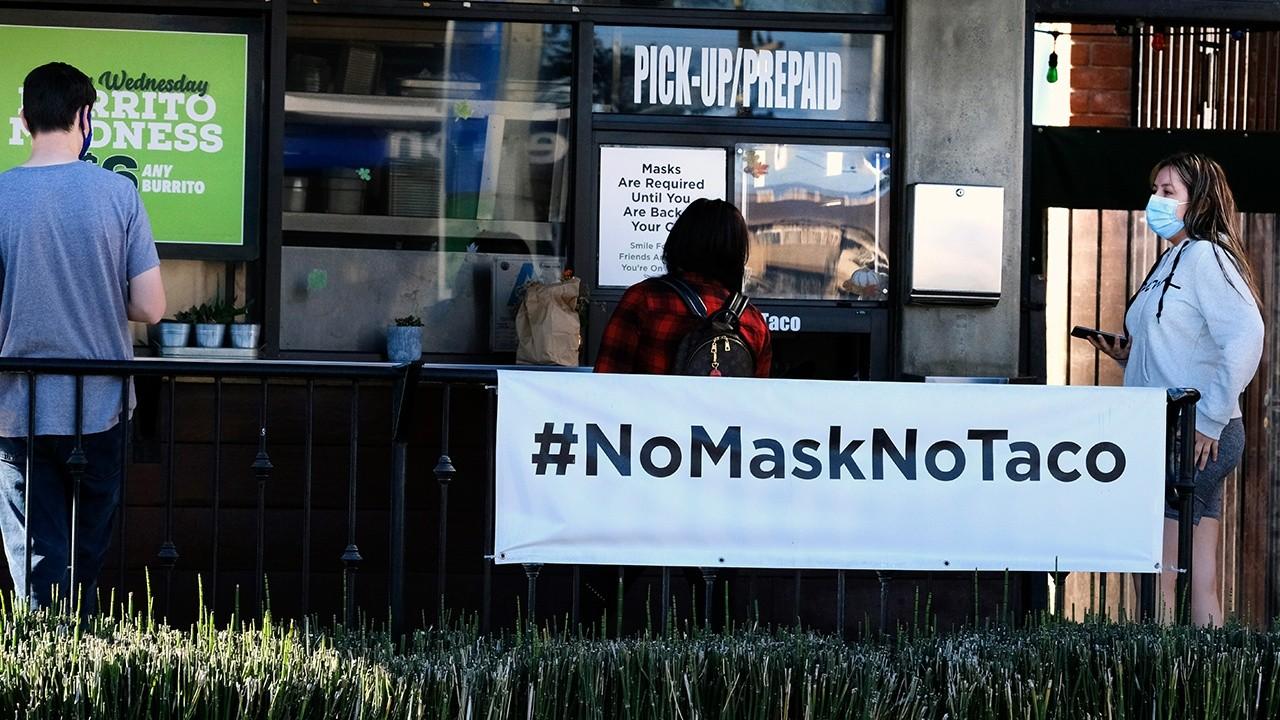US economy at risk of 'double-dip' recession without additional coronavirus relief
Lawmakers trying to pass $908B relief plan before year's end
The U.S. economy faces the risk of a double-dip recession if Congress fails to pass another round of emergency aid before the end of the year.
That's according to a new analysis published by S&P economists, which argued that without additional stimulus measures amid a surge in COVID-19 cases, the GDP -- the broadest measures of goods and services produced in the country -- will almost certainly decline for two consecutive quarters, postponing a full recovery until the second half of 2022.
The U.S. has reported more than 14.8 million COVID-19 cases, the most in the world, and close to 282,000 deaths related to the virus.
BIDEN CALLS FOR ERASING SOME STUDENT LOAN DEBT, FACES PROGRESSIVE PRESSURE TO GO FURTHER
“Since June, S&P Global Economics has said that it is not a far-fetched possibility that we could get a scenario of no more fiscal stimulus and a COVID-19 resurgence that cripples growth in the fourth quarter,” S&P chief economist Beth Ann Bovino wrote in the analyst note last week. "Unfortunately, this downside scenario seems more likely."
To be loosely defined as a recession, a country needs two consecutive quarters of declines in real GDP. The National Bureau of Economic Research, a private organization of economists, describes it as “significant decline in economic activity spread across the economy, lasting more than a few months, normally visible in real GDP, real income, employment, industrial production, and wholesale-retail sales.”
Bovino wrote that the economy will likely shrink by 2.3% in the final three months of 2020, making the total decline 3.9% for the full year. If Congress does not pass a $1 trillion aid package, she wrote, the economic situation could become direr.
12 MILLION AMERICANS FACE LOSS OF UNEMPLOYMENT BENEFITS DAY AFTER CHRISTMAS
“On its own, a one quarter decline does not signal recession," she wrote. "But it increases chances that the U.S. will see another downturn in the near future."
A $908 billion relief framework unveiled last week by a group of bipartisan senators has garnered some traction among Democratic leaders and would be backed by Senate Majority Leader Mitch McConnell and President Trump, spurring hope that Congress will be able to break a monthslong logjam on emergency aid.
The proposal allocates about $300 billion in funding for small businesses through the Paycheck Protection Program, $240 billion in aid for state and local governments, $180 billion to extend boosted unemployment benefits at $300 per week through March and a temporary moratorium on COVID liability lawsuits to allow states enough time to design their own laws.
12 MILLION AMERICANS FACE LOSS OF UNEMPLOYMENT BENEFITS DAY AFTER CHRISTMAS
It would also funnel $16 billion into vaccine distribution, testing and contact tracing, put $82 billion into education and give $45 billion for transportation.
Renewed relief talks come at an increasingly perilous time for the nation as it teeters on the brink of another economic downturn.
Job growth is slowing -- the Labor Department said last week that the economy created just 245,000 new positions last month, the smallest amount since the recovery began -- state and local governments are implementing more restriction measures and key lifelines that propped up the economy in the early days of the pandemic are poised to expire at the end of the year.
One estimate found that at least 12 million laid-off workers will be left without an income the day after Christmas when two federal jobless aid programs established the March CARES Act expire.
"It's simply unacceptable for us to not help in this circumstance," Sen. Mitt Romney, who helped to craft the proposal, told reporters last week. "I happen to be a deficit hawk ... But the time to borrow money, maybe the only time to borrow money, is when there's a crisis. And this is a crisis."




















